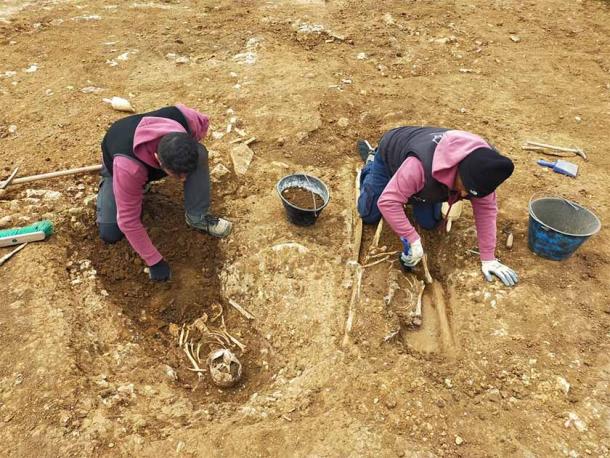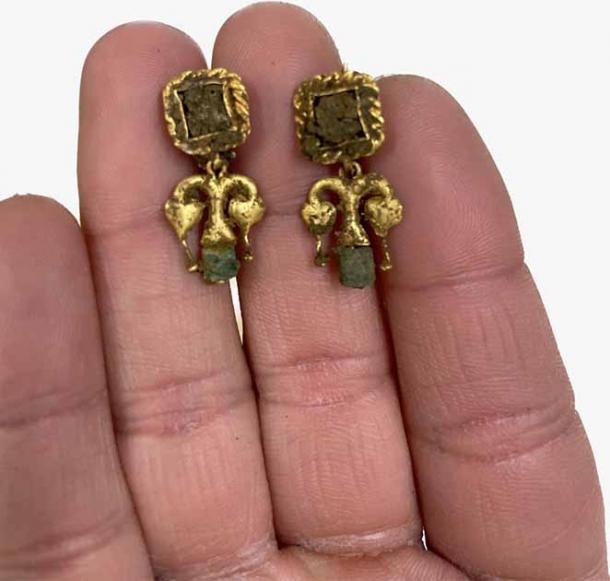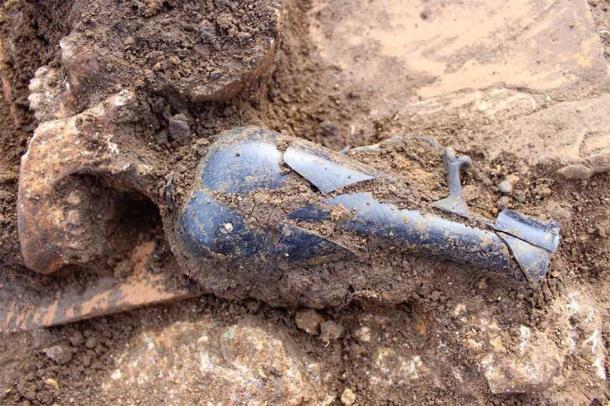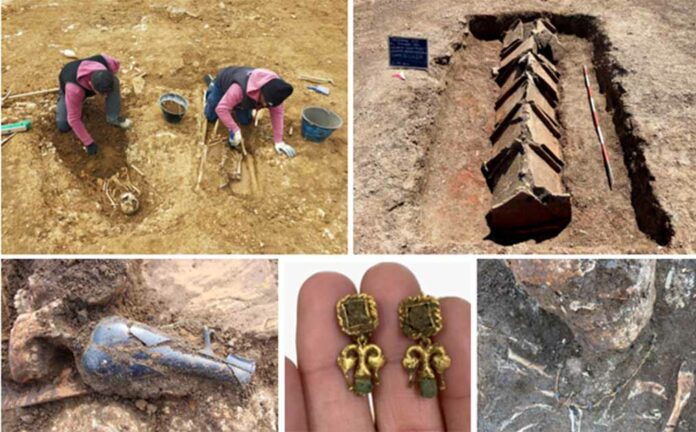In a remarkable archaeological discovery, a team of researchers has unearthed a captivating Roman necropolis near Rome, offering a glimpse into the lavish lives and final resting places of the ancient empire’s elite. The two-year-long excavation project, conducted at the site of a planned solar energy plant, has revealed a treasure trove of artifacts and insights that challenge our understanding of Roman society.
Building Fancy Eternal Homes for Rome’s Most Exalted
The necropolis, spanning an impressive 52-acre (21-hectare) area, was found to contain 67 elaborately dressed skeletons buried in 57 large and ornate tombs. Early testing suggests that the site dates back to the second through fourth centuries AD, overlapping with the peak of the Roman Empire.

The wealth and status of the individuals interred in this necropolis are immediately apparent. The well-preserved skeletons were adorned with golden jewelry, including necklaces and earrings, and were found wearing fancy leather footwear and expensive stockings. The tombs themselves were designed to mimic the architecture of the deceased’s earthly homes, with cloth linings, painted tiles, and terracotta decorations adding an air of luxury and elegance.
“We found several skeletons still wearing their expensive stockings and shoes,” explains lead excavation archaeologist Emanuele Giannini. “All these riches, and the fact that the bones show no sign of stress or physical labor, [leads us to believe] these weren’t local farmers, but upper-crust members of Roman families coming from cities.”

The artifacts discovered within the tombs are a testament to the wealth and status of the interred individuals. Among the highlights are silver engraved rings embedded with amber, amulets containing precious stones, Roman coins, shiny glass objects, and even some preserved items of clothing. This lavish display of material wealth underscores the importance placed on providing the deceased with all the necessary possessions for their journey to the afterlife.
Family connections were also paramount in Roman society, as evidenced by the fact that the majority of the excavated tombs were communal, housing the remains of two or more individuals. Some of the skeletons were even found buried with their arms locked together, a poignant reminder of the eternal bonds between loved ones.
Balancing the Needs of the Present with Reverence for the Past

The discovery of this elite Roman necropolis has not only captivated archaeologists but also presented a complex challenge in balancing the demands of modern development with the preservation of the past. The land where the necropolis was found was originally slated for a solar energy plant, but the magnitude of the discovery has prompted a rethinking of the project’s plans.
“We are excavating a huge rural area to redevelop the land and are balancing the need to avoid ruining such unique wonders with the goal of boosting clean energy production,” explains Margherita Eichberg, an art heritage superintendent from Italy’s Cultural Ministry.

Rather than leveling the area for construction, the land around the necropolis will be cordoned off and preserved for future excavations. Archaeologists are confident that more wonders will be found during their continuing exploration of the site, which may lead to even more sections being excluded from the solar development project.
“This is the fascination and beauty of Italy,” Eichberg declares. “Each time there’s a dig, incredible wonders from the past come out of the ground which need to be preserved.”
Conclusion
The discovery of the Roman necropolis near Rome has captivated the archaeological community and the public alike. The opulent tombs and their well-preserved occupants have provided a rare and invaluable glimpse into the lives and final resting places of the ancient empire’s elite. As researchers continue to unravel the secrets of this remarkable site, the challenge of balancing modern development with the reverence for the past remains at the forefront. Yet, it is through these extraordinary discoveries that we can better understand the rich tapestry of Roman history and the enduring legacy of one of the world’s most influential civilizations.
